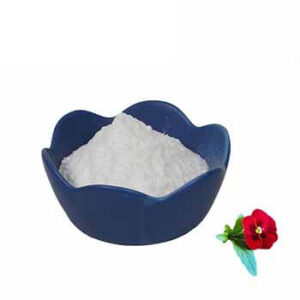Description
Pyridine Chemical Properties
| Melting point | -42 °C (lit.) |
| Boiling point | 115 °C (lit.) |
| density | 0.978 g/mL at 25 °C (lit.) |
| vapor density | 2.72 (vs air) |
| vapor pressure | 23.8 mm Hg ( 25 °C) |
| FEMA | 2966 | PYRIDINE |
| refractive index | n20/D 1.509(lit.) |
| Fp | 68 °F |
| storage temp. | Store at +5°C to +30°C. |
| solubility | H2O: in accordance |
| form | Liquid |
| pka | 5.25(at 25℃) |
| color | colorless |
| Odor | Nauseating odor detectable at 0.23 to 1.9 ppm (mean = 0.66 ppm) |
| Relative polarity | 0.302 |
| PH | 8.81 (H2O, 20℃) |
| explosive limit | 12.4% |
| Odor Threshold | 0.063ppm |
| Odor Type | fishy |
| Water Solubility | Miscible |
| FreezingPoint | -42℃ |
| λmax | λ: 305 nm Amax: 1.00 λ: 315 nm Amax: 0.15 λ: 335 nm Amax: 0.02 λ: 350-400 nm Amax: 0.01 |
| Merck | 14,7970 |
| BRN | 103233 |
| Henry’s Law Constant | 18.4 at 30 °C (headspace-GC, Chaintreau et al., 1995) |
| Dielectric constant | 12.5(20℃) |
| Exposure limits | TLV-TWA 5 ppm (~15 mg/m3) (ACGIH, MSHA,and OSHA); STEL 10 ppm (ACGIH), IDLH 3600 ppm (NIOSH). |
| Stability: | Stable. Flammable. Incompatible with strong oxidizing agents, strong acids. |
| InChIKey | JUJWROOIHBZHMG-UHFFFAOYSA-N |
| LogP | 0.64 at 20℃ |
| CAS DataBase Reference | 110-86-1(CAS DataBase Reference) |
| IARC | 2B (Vol. 77, 119) 2019 |
| NIST Chemistry Reference | Pyridine(110-86-1) |
| EPA Substance Registry System | Pyridine (110-86-1) |
Safety Information
| Hazard Codes | T,N,F,Xn |
| Risk Statements | 11-20/21/22-39/23/24/25-23/24/25-52-36/38 |
| Safety Statements | 36/37/39-38-45-61-28A-26-28-24/25-22-36/37-16-7 |
| RIDADR | UN 1282 3/PG 2 |
| OEB | A |
| OEL | TWA: 5 ppm (15 mg/m3) |
| WGK Germany | 2 |
| RTECS | UR8400000 |
| F | 3-10 |
| Autoignition Temperature | 482 °C |
| Hazard Note | Highly Flammable/Harmful |
| TSCA | Yes |
| HS Code | 2933 31 00 |
| HazardClass | 3 |
| PackingGroup | II |
| Hazardous Substances Data | 110-86-1(Hazardous Substances Data) |
| Toxicity | LD50 orally in rats: 1.58 g/kg (Smyth) |
| IDLA | 1,000 ppm |
Product Application of Pyridine CAS#110-86-1
As one of the important nitrogen-containing heterocyclic compounds, pyridine has been widely used in fields including photocatalysis and optoelectronic devices. In pharmaceutical chemistry, pyridine is also often used as the parent nucleus structure of drugs. At present, the deuteration reaction of pyridine is mainly carried out by metal catalysts such as Pd, Rh, Ir, Ru and Ni, and hydrogen isotope exchange (HIE) is carried out at the α-position, while HIE at other positions is rarely involved. Among the many derivatives of pyridine, some are important drugs, and some are important components of vitamins or enzymes. For example, the amide of pyridine-3-carboxylic acid (i.e., nicotinamide) forms an important dinucleotide with adenine (see purine), ribose and phosphate in coenzyme I. Isoniazid, a derivative of pyridine, is an oral anti-tuberculosis drug. 2-Methyl-5-vinylpyridine is an important raw material for synthetic rubber. In addition to being a solvent, pyridine can also be used in industry as a denaturant, dyeing aid, and starting material for the synthesis of a series of products, including medicines, disinfectants, dyes, food seasonings, adhesives, explosives, etc.






Reviews
There are no reviews yet.